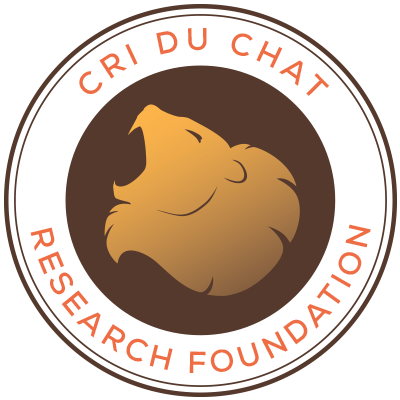How is CDCRF helping
CDCRF: Advancing Awareness, Research, and Treatments for 5p- Syndrome
At CDCRF, we are deeply committed to educating the public and medical community about 5p- syndrome and driving research that leads to effective treatments. Our work spans awareness campaigns, research funding, and direct partnerships with biotech innovators—all to improve the lives of those affected by this condition.
Raising Awareness & Educating the Community
CDCRF works to ensure that caregivers, clinicians, and the broader community are informed and empowered:
Digital Natural History Study: In partnership with Citizen Health, CDCRF is conducting a free digital natural history study of 5p- syndrome to help families collect medical records, join research efforts, and contribute to faster treatment development.
Educational Webinars: We regularly host expert-led webinars on genomics and precision medicine to explore current understanding and emerging therapies for genetic disorders.
Global 5p- Syndrome Network: Through our active social media groups, caregivers worldwide can connect, share personal experiences, and support one another with practical insights on symptoms and treatments.
Clinician Resources: We provide detailed medical information sheets for healthcare professionals unfamiliar with 5p- syndrome and promote initiatives like our Search and Rescue program to identify undiagnosed individuals.
Treating the Downstream Effects
The symptoms of 5p- syndrome result from haploinsufficiency—when a deletion of genetic material means only 50% of a critical protein is produced. CDCRF supports efforts targeting both the downstream consequences and the core cause of this protein deficiency.
Repurposed Medicines
Repurposed medicines are existing FDA-approved drugs or supplements that may positively affect disrupted pathways in 5p- syndrome. These therapies could “rescue” some symptoms, even later in life.
CDCRF is:
Partnering with researchers to test compounds that may treat the downstream effects of protein deficiency.
Funding development of patient-derived cell lines for High Throughput Screening (HTS)—a tool used to find promising repurposed drugs efficiently. [Link to cell lines list]
Upregulating Critical Proteins: A Disease-Modifying Approach
One key target is the CTNND2 gene, which produces delta catenin, a protein critical for healthy brain function. CDCRF is:
Funding the development of an Antisense Oligonucleotide (ASO) therapy with biotech partners Mazhi Therapeutics and iXCells to increase expression of the remaining functional copy of CTNND2.
ASOs are small RNA-based therapies designed to boost production of a specific protein. They are already FDA-approved for diseases like Spinal Muscular Atrophy (SMA) and in development for:
SCN2A (PRAX-222 – Praxis Precision Medicines)
Dravet Syndrome (Stoke Therapeutics – MONARCH study)
Angelman Syndrome (GeneTX/Ultragenyx – GTX-102 trial)
ASO Challenges:
Delivery: Currently administered via spinal tap, with research ongoing into less invasive methods.
Maintenance: ASOs degrade over time, requiring regular re-administration (e.g., SMA therapy every four months).
Small Molecule Therapeutics
Small molecules—commonly administered as pills—can target intracellular pathways and may:
Increase levels of critical proteins.
Mitigate downstream effects of haploinsufficiency.
Some small molecules are already FDA-approved for other uses and may be fast-tracked for 5p- syndrome through drug repurposing. CDCRF supports:
In silico and in vitro screening (computer and lab-based testing).
Collaboration with companies like Sherwood Pharma to identify potential compounds that regulate 5p- syndrome gene expression.
Gene Replacement Therapy (GRT)
For a more comprehensive correction of the underlying cause, CDCRF is exploring gene replacement therapies. GRT introduces a functioning gene into a patient’s cells to restore full protein production.
This technology is already being trialed in other neurological conditions by companies like:
Taysha Gene Therapies
Lysogene
CDCRF is:
Funding gene therapy research for 5p- syndrome.
Developing clinical models and biomarker tools to accelerate readiness for future human trials.
CDCRF's Therapeutic Pipeline
The most common question we hear is: “When will there be a treatment for my child?”
While we can't provide a definitive date, CDCRF is aggressively pursuing multiple promising pathways:
Repurposed drugs
ASO therapies
Small molecule compounds
Gene therapy
We're investing in:
Research grants to drive innovation
Cell models to test new treatments
Clinical trial readiness and biomarker development
Every day, we move closer—with the help of scientists, clinicians, biotech partners, and especially the families who participate in surveys, studies, and registries.
There is Hope
Thanks to advancements in precision medicine, the Orphan Drug Act, and digital healthcare tools, the outlook for 5p- syndrome treatment has never been more promising. CDCRF remains laser-focused on transforming that hope into real, effective therapies.
Together, we are building a future where 5p- syndrome is not just understood—but treatable.
